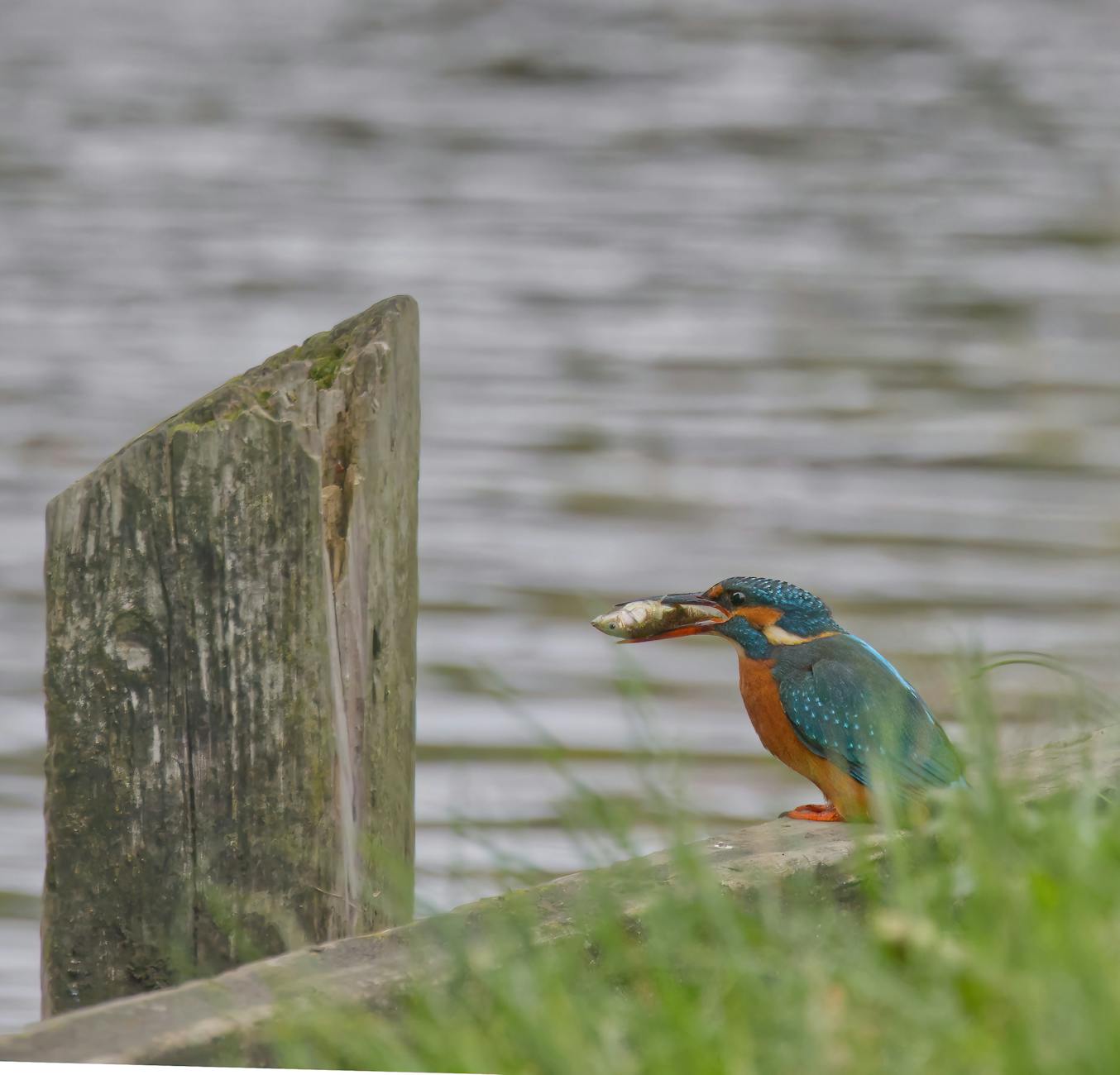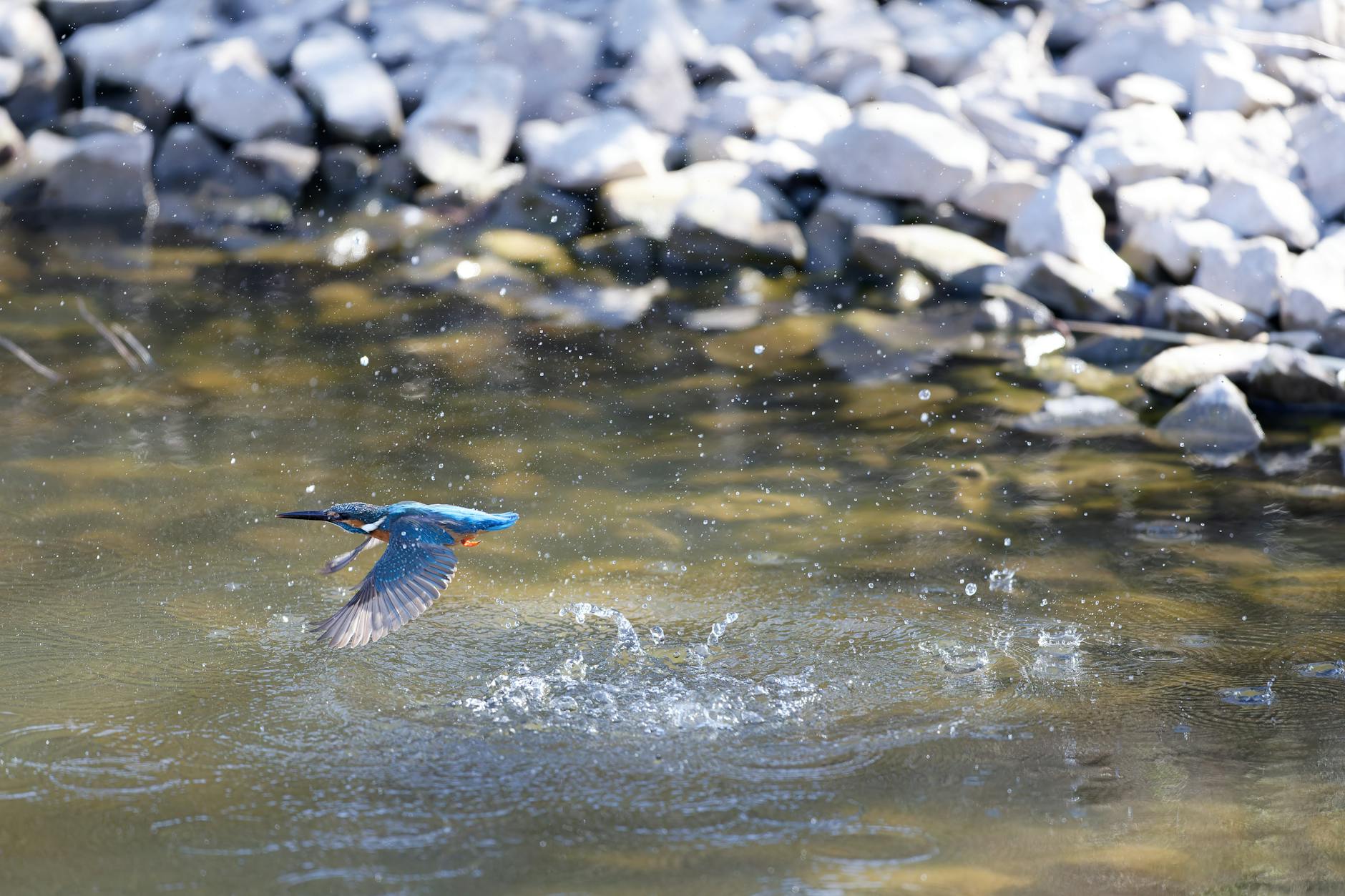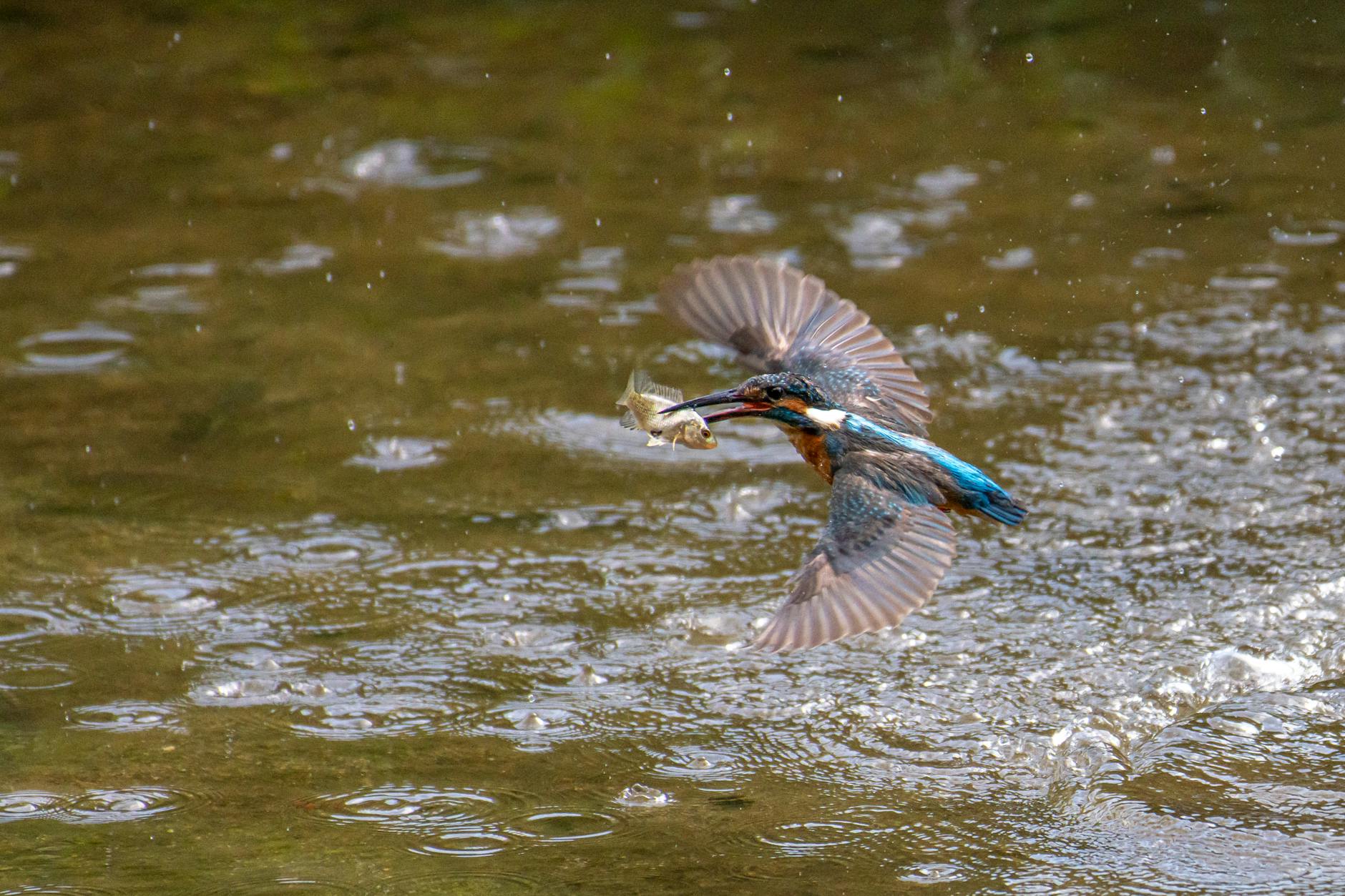The Amazing Skills That Make Kingfishers Exceptional Hunters
Kingfishers are truly fascinating birds, renowned for their vibrant colours and impressive hunting skills. These small yet skilled predators thrive near freshwater habitats like rivers and ponds. Their hunting prowess isn’t just a spectacle; it plays a vital role in maintaining the balance of aquatic ecosystems.
So, what makes these birds such exceptional hunters? They possess remarkable eyesight, enabling them to spot fish from a distance. Their quick dives are precision strikes, allowing them to catch prey with unmatched efficiency. But their significance extends beyond their hunting ability; they help regulate fish populations, ensuring healthier waterways. In this post, we’ll explore the unique skills that set kingfishers apart in the animal kingdom and highlight their importance in our environment.
Remarkable Physical Adaptations
Kingfishers showcase a series of impressive physical adaptations that make them outstanding hunters. Each feature plays a crucial role in their ability to catch prey with precision and efficiency. Let’s explore some of these remarkable traits.
Streamlined Body Structure
A kingfisher’s body is uniquely designed to aid in diving and agility. Their slender shape reduces water resistance, allowing for swift entry into the water. This streamlined form means they can reach their target quickly, minimising the time spent exposed above the surface. With a compact body, they manoeuvre gracefully, typically diving headfirst, which enhances their chances of a successful catch.
Find out more about kingfishers’ physical adaptations here.
Specialized Beak Design
Kingfishers possess long, pointed beaks that are perfectly suited for snatching fish. This elongated beak acts like a spear, enabling them to capture prey efficiently as they dive. The design provides an advantage when hunting in the water, allowing them to reach fish that may be just beneath the surface. A pointed beak helps exert pressure, making it easier to grasp slippery fish without losing grip.
Explore more about the benefits of their beak design in this article here.
Sharp Vision and Colour Perception
One of the key traits that enhance the hunting success of kingfishers is their exceptional eyesight. They possess excellent vision that allows them to spot fish from a distance, even while perched high above water. Their eyes can adjust for the refraction of light in water, making it easier to judge distances accurately. This keen eyesight is crucial, as it enables them to dive at the right moment and catch their prey effectively.
For a deeper understanding of their vision capabilities, check out this informative link here.
Strong Neck Muscles
Strong neck muscles are vital for kingfishers as they help stabilise their heads during rapid dives. These muscles provide the strength needed to keep their head steady, ensuring they can zero in on their target without losing balance. The enhanced control allowed by these muscles is essential for precision when they strike the water’s surface.
Learn more about how neck strength contributes to their hunting efficiency here.

Photo by Stephen Noulton
Hunting Techniques and Strategies
Kingfishers display a range of effective hunting techniques that showcase their remarkable skills. From scouting high above the water to diving with deadly precision, each method serves a specific purpose in securing their next meal. Let’s look at some of these fascinating strategies.
Perching and Scouting
Kingfishers are masters of observation. They often choose high perches, such as tree branches or rocks, to survey their surroundings. From these vantage points, they can spot fish swimming beneath the surface. Their keen eyesight allows them to detect movements and identify potential prey from a distance.
Once they spot a target, they remain motionless, waiting for the perfect moment to strike. This period of observation can last for several minutes, ensuring they choose the best opportunity for a successful hunt. By minimising movement, they avoid alerting fish and increase their chances of a catch.
For more on their scouting behaviour, check out this article on fascinating hunting techniques of the belted kingfisher.
Diving Precision
The diving technique of kingfishers is one of their most impressive skills. When they decide to hunt, they perform a head-first dive into the water. This method allows them to penetrate the surface swiftly, reducing the chances of the fish escaping. They can dive at speeds of up to 40 kilometers (about 25 miles) per hour, which illustrates their powerful and agile nature.
These birds aim for their prey with remarkable accuracy. The structure of their beaks enables them to capture fish effectively as they enter the water. During this process, they may require special adaptations to prevent concussions from hitting the water’s surface while diving. Learn more about this fascinating behaviour in the article on how kingfishers dive head-first without getting concussions.
Underwater Pursuit
After the initial dive, kingfishers don’t simply rely on the impact to catch their prey. If the fish evades capture, these birds are equipped to pursue it underwater. They use powerful wing strokes to propel themselves through the water, maintaining speed and agility.
This underwater pursuit adds another layer of hunting skill, showcasing their adaptability. Although many fish can swim swiftly, kingfishers have developed strategies to outmatch them during the chase. The combination of sharp vision and powerful swimming enables them to follow fish even in swift currents.
For a closer look at their diving behaviour, you can read about the techniques used by kingfishers on Feathered Photography.
Use of Camouflage
Camouflage plays a crucial role in a kingfisher’s success. Their vibrant plumage may seem counterintuitive, but these birds blend seamlessly into their natural surroundings. The colours and patterns help them remain unnoticed by potential prey while perched above the water.
This trait is vital during hunting, as it allows them to launch an attack without being detected. The contrast between their bright feathers and the watery environment can confuse fish, making it harder for them to recognise an incoming threat. Thus, camouflage serves as an essential tactic in their overall hunting strategy.
For a deeper dive into their hunting methods, consider exploring how various kingfisher species adapt their techniques in different environments.

Photo by ao tak
Ecological Role of Kingfishers
Kingfishers do much more than capture fish; they play crucial roles in the health of aquatic ecosystems. Through their hunting behaviours and food preferences, they help maintain balance and indicate the overall health of their environments.
Population Control of Fish Species
One of the key contributions of kingfishers to aquatic ecosystems is their role in regulating fish populations. By preying on certain fish species, kingfishers help maintain a balanced ecosystem. Without their presence, populations of small fish could explode, resulting in overgrazing of aquatic vegetation. This imbalance affects not just the fish but the entire ecosystem.
The feeding habits of kingfishers mean they often target the most abundant species. By controlling these populations, they prevent overpopulation, which can lead to a decrease in water quality and biodiversity. In addition, their predation can help control the spread of invasive species that threaten native fish populations. More insights on their ecological roles can be found here.
Indicator of Aquatic Health
Kingfishers serve as excellent indicators of water quality and overall ecosystem health. Their presence in an area often signifies a healthy aquatic environment. Since they primarily feed on fish and small aquatic creatures, any decline in their population can signal changes in water quality or habitat conditions.
These birds are sensitive to pollutants and can reveal the effects of environmental stressors. When kingfisher numbers drop, it may indicate issues such as water contamination or habitat degradation. Monitoring kingfisher populations can provide valuable data for conservation efforts and management practices in aquatic ecosystems. More information about their role as indicators can be found here.

Photo by Ron Lach
Conclusion on Kingfisher Hunting Skills
The incredible hunting skills of kingfishers stem from a blend of impressive physical adaptations and effective strategies. Each feature and technique works in harmony, allowing these birds to thrive as proficient hunters in aquatic environments.
Physical Adaptations That Enhance Hunting
- Streamlined Body Structure
Kingfishers have a sleek body shape that reduces resistance during dives. This design enables them to enter the water fast, increasing their chances of a successful catch. - Specialized Beak Design
Their long, pointed beaks are perfectly crafted for snatching fish. This structure acts like a spear, allowing them to reach underwater prey with precision. - Sharp Vision and Colour Perception
With excellent eyesight, kingfishers can spot fish from a distance. Their ability to adjust for light refraction in water aids in accurate targeting during dives. - Strong Neck Muscles
Robust neck muscles help kingfishers stabilise their heads as they dive. This strength is crucial for maintaining focus on their prey, ensuring successful strikes.
For more on their adaptations, click here.
Hunting Techniques That Define Their Success
- Perching and Scouting
Kingfishers often perch high to observe the water below, waiting for the right moment to strike. This patience ensures they maximise their chances for a catch. - Diving Precision
Their head-first dives enable them to penetrate the surface swiftly. Diving at speeds of up to 40km/h, they can surprise their prey before it has a chance to escape. - Underwater Pursuit
If a fish avoids capture, kingfishers can chase it underwater using powerful wing strokes, showcasing their agility and determination. - Use of Camouflage
Although they are brightly coloured, kingfishers can blend into their surroundings. This camouflage helps them remain unnoticed, allowing them to launch successful attacks against unsuspecting fish.
To learn more about their hunting techniques, check out this article.

Photo by Carlos_Kingfisher.
Conclusion
Kingfishers are not just remarkable hunters; they are key to maintaining the health of aquatic ecosystems. Their unique skills allow them to thrive while playing essential roles in controlling fish populations and indicating water quality.
As we appreciate their beauty and efficiency, it’s crucial to remember the threats they face. Habitat destruction and water pollution threaten these birds and the balance of their environments. Protecting their habitats is essential for sustaining their populations and, ultimately, the ecosystems they inhabit.
How can we contribute to preserving these vibrant birds? Engage in local conservation efforts and advocate for clean waterways. Every action counts in ensuring these exceptional hunters continue to thrive for generations to come.










